By the time you’ve set up your Google Business Profile and watched it go live, you might feel like you’ve crossed the finish line. The endless steps of getting verified, fine-tuning your details, or battling through the suspension process can leave you thinking, “I’m done!” But here’s the truth: the real work is just beginning. If you’re serious about showing up in local search, letting your profile gather dust is not an option.
As a local business owner, you’ve got more than enough on your plate—managing staff, serving customers, and somehow squeezing in time for all the other tasks that keep your business running. But if you want to stay competitive in local search, you need to pay attention to the key factors that determine where you show up and how often. The good news? You don’t need to become a full-time SEO expert to make it happen.
In this blog, we’ll dive into 11 essential ranking factors every local business should monitor. Each search query is unique, and how well your business ranks depends on how effectively your profile aligns with the specific ranking factors relevant to that query. Let’s break it down.
1. Category: Aligning with What Your Customers Search
Think of your Google Business Profile as a dynamic portfolio that communicates exactly what your business offers. The categories you select don’t just label your business—they define the search queries where you’ll show up. When someone searches “sushi near me,” the last thing they want is a burger restaurant that has sushi on the menu. It’s about making sure your profile reflects what people are actually searching for and ensuring that your business is accurately positioned.
Google gives businesses the option to add up to 9 secondary categories, and you should take full advantage of that. The more relevant categories you add, the better chance you have to appear in different search queries. The real trick, though, is in picking your primary category. This could make the difference between showing up in the top 3 results or not even making the first page.
For example, if your Japanese restaurant serves sushi, it’s unlikely you’ll rank highly (top 3) for “sushi” searches unless you’ve made “Sushi Restaurant” your primary category. Google prioritizes businesses that match the search intent directly, and having the right primary category is crucial for that. However, depending on the competition in your area, you can still rank for the sushi query, just not as high as you would if “Sushi Restaurant” were your primary category.
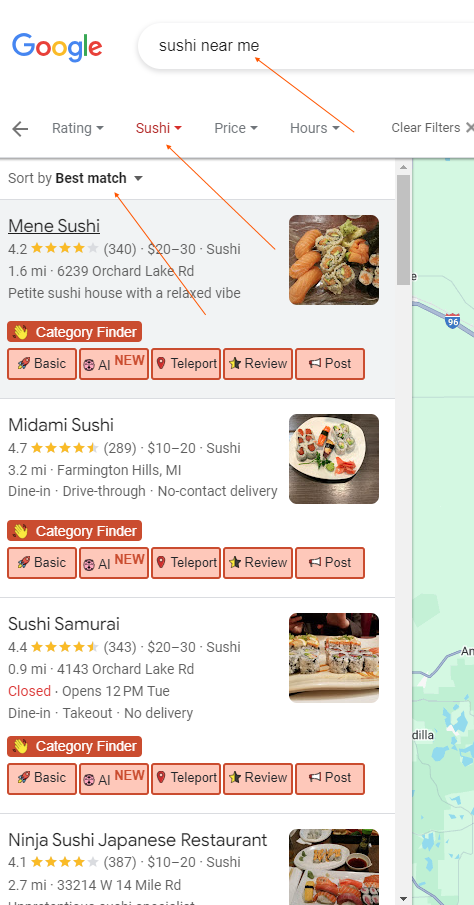
Pro Tip: Research search volume for keywords related to your business before deciding on your primary category. The right choice could help you dominate the most relevant search results.
2. Why Secondary Categories Matter
While your primary category is critical for ranking in top search results, secondary categories can’t be overlooked. Take the example of an Italian restaurant offering pizza. Originally, this restaurant didn’t rank for “pizza near me” or “best pizza near me,” despite having pizza on the menu. Once “Pizza Restaurant” was added as a secondary category, it began ranking in the top 4 for both search queries. Without the secondary category, it didn’t rank at all.
We even ran a test—after removing “Pizza Restaurant” from the secondary categories, rankings dropped completely, only to shoot back up when it was re-added. This example shows how essential secondary categories for some search queries are in making sure your business is visible.

Restaurant owners and businesses alike need to consider their menu options (or services for non restaurant categories) when selecting secondary categories. If you have multiple steaks on your menu, adding the “Steakhouse” category will benefit you for steak related queries. Have seafood? Add “Seafood Restaurant.” Sell burgers? Add “Hamburger Restaurant.” You get the point—make sure your categories reflect all key aspects of what your menu offers.
3. Business Name: What’s in a Name? Everything!
Search engine algorithms— specifically Google’s—tend to favor business names that include the keywords people search for. The closer your business name matches a search query, the more likely Google is to rank your business higher than competitors who lack these keywords. Research from Sterling Sky, has shown the considerable impact a business name can have on local rankings. This is why it’s important to ensure your business name aligns with relevant search queries, but avoid the temptation to overdo it.
Your business name is one of the most visible aspects of your brand. If your business name includes keywords that match what users are searching for, it can give you a meaningful advantage. For instance, a name like “Tokyo Sushi Bar” might perform better in local searches for sushi than something more general, like “The Red Dragon.”
However, be cautious: Google frowns upon keyword stuffing in business names. Overloading your name with keywords to boost rankings can not only turn off customers but also get your profile suspended. It’s important to strike the right balance between incorporating relevant terms and staying true to your brand identity.
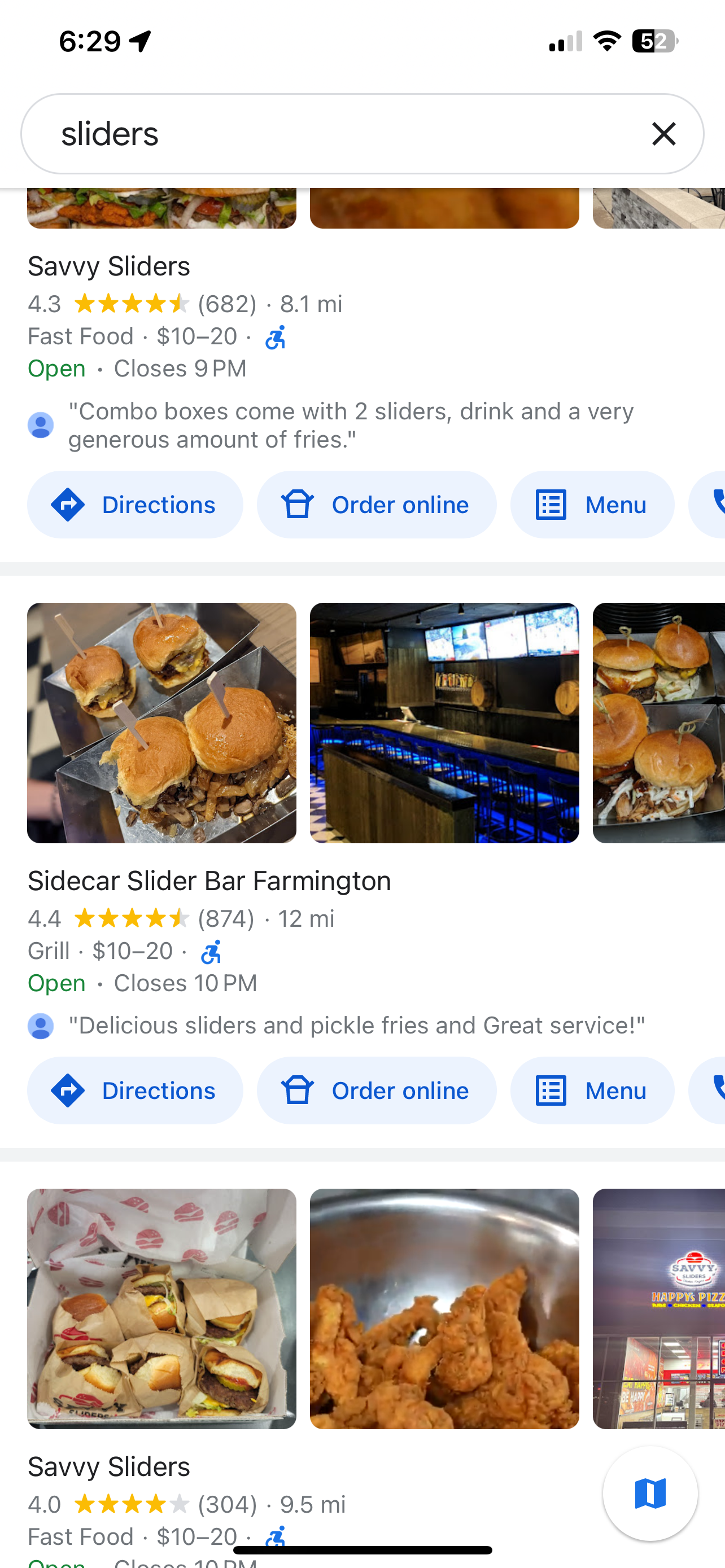
For more detailed guidance on picking the perfect name, check out Mariam Ellis’s blog on the subject; Everything That Can Go Right and Wrong with Your Local Business Name for in-depth insights into crafting a name that resonates with your business and searchers alike.
4. Menu Item: What’s on the Menu Matters
When it comes to ranking in local searches, your menu does more than just tell customers what you serve—it also plays a big role in how Google ranks your business for food-related search queries. If your menu items match the search query people are using, like “Margherita Pizza,” you’re more likely to rank for that search query.
Even if customers rave about your “Pepperoni Pizza” in reviews, if it’s not on your menu, Google won’t rank your business for it. Google needs to trust that the dish is part of your regular offerings, not just a one-off special.
Here’s where it gets tricky: Don’t rely on menu headers like “Pizza” or “Sushi” to do the heavy lifting for your ranking. It’s not enough to list “Pepperoni” under a header titled “Pizza”—Google needs to see the full name, like “Pepperoni Pizza,” in every menu item. The more specific and complete your menu item names are, the better your chances of appearing in relevant search results. So when in doubt, think in terms of what your customers are searching for and label each dish accordingly. Google doesn’t assume anything—it only reads what’s there.
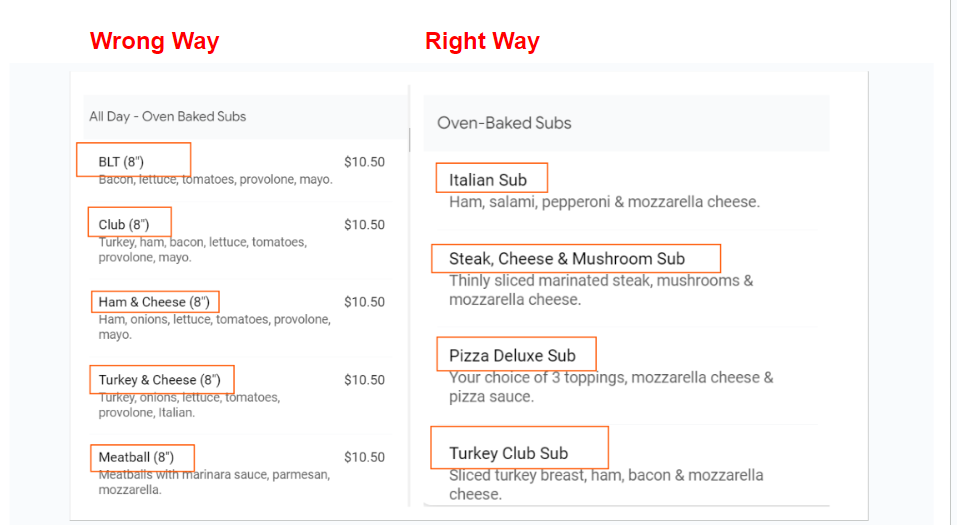
Label your menu to rank for food related search queries. For more in depth data on how your menu items boost rankings, read here.
Pro Tip: Keep your menu updated using a third-party vendor with a direct API to your Google Business Profile. This way, you won’t have to update it in two places, and you’ll stay current across all platforms. If integrating your menu through an API is not an option, Google provides an AI tool specifically for adding your menu to your GBP.
Don’t Forget: Products and Services Matter, Too
The same logic we applied to menu items works for your products and services. Whether you’re listing “Bluetooth Speakers” or offering “Car Detailing,” the key is to get specific. Google isn’t going to connect the dots if your service is simply labeled “Detailing” or your product as “Speakers.” Each item needs to match exactly what people are searching for, so think in search terms, not just internal jargon.

5. Photos: Fuel for Rankings
Photos are more than eye candy—they’re a critical part of how Google understands and ranks your business now. Google’s algorithm can now analyze images, and when a photo aligns with a menu item (or service you offer), it acts as a trust signal, boosting your profile’s credibility. Photos also feature in menu highlights, “Discover More” sections, and the photo categories now displayed at the top of your Google Business Profile in Maps.
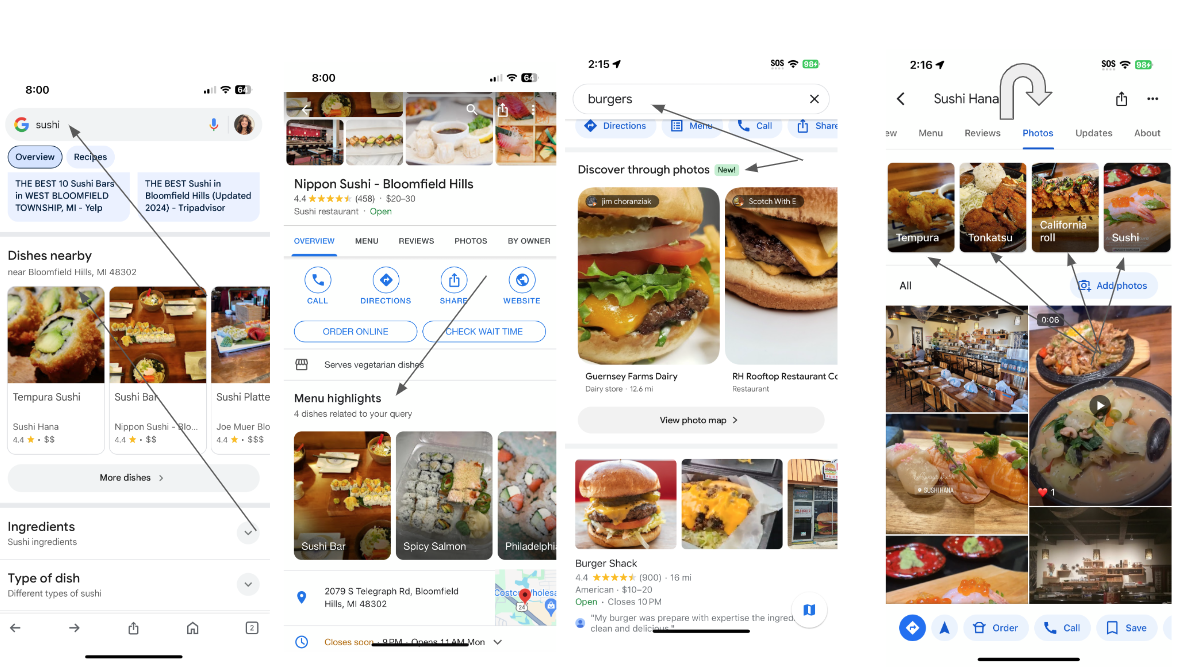
What’s important to note is that the names of your menu highlights and the keywords tied to photo categories are all linked to search queries. The more signals you provide through well-labeled, relevant photos, the better your chances of ranking for that keyword.
The ranking report below highlights the search queries “Kobe Slider” and “Wagyu Slider.” I chose these two keywords specifically to demonstrate the impact that precise menu item names and menu highlight names can have on search rankings. “Kobe Slider is on the menu and “Wagyu Slider” is a Menu highlight.
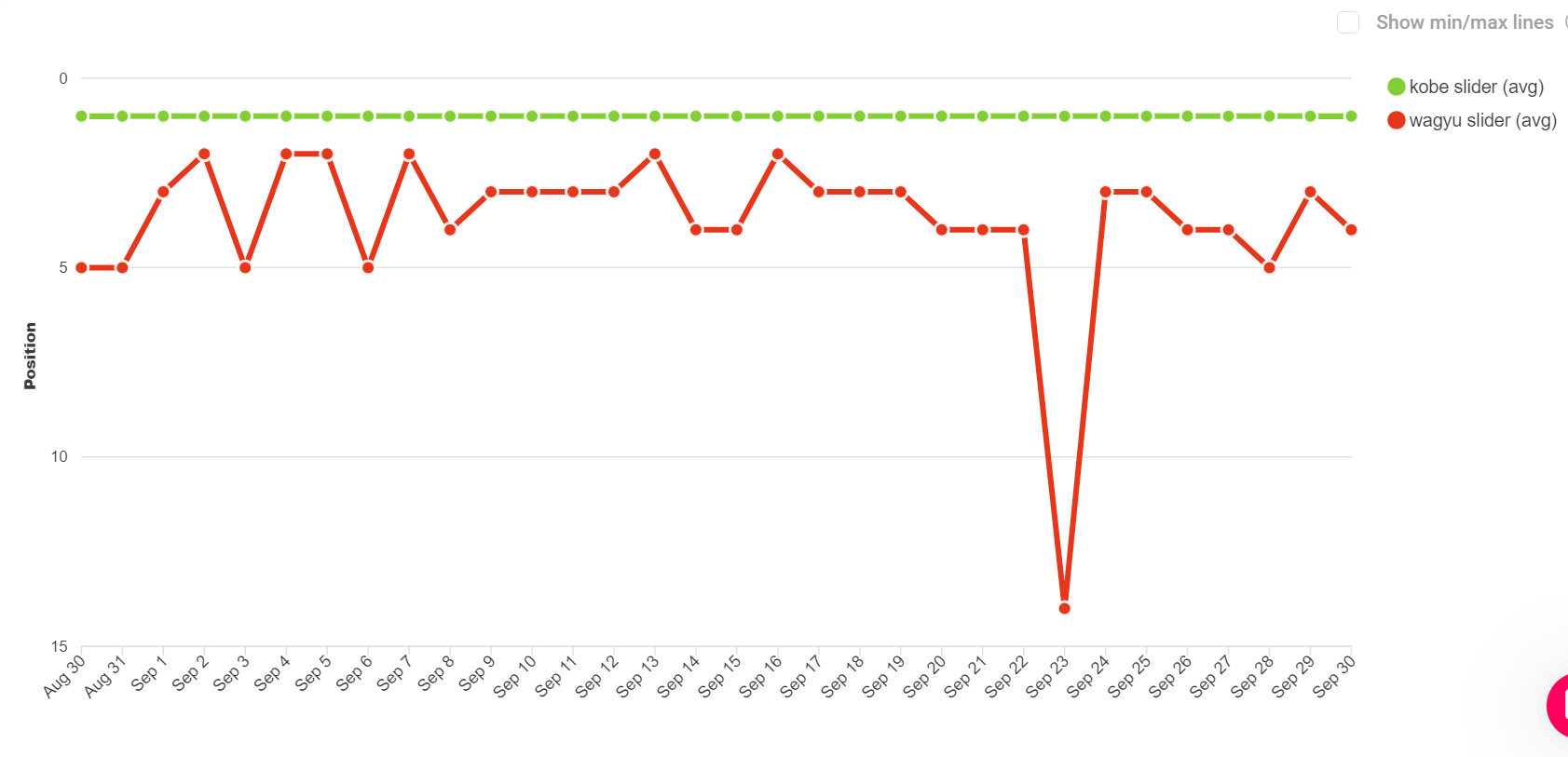
Now let’s consider the search queries “slider” and “sliders.” How does Google rank these two keywords for the same restaurant alongside “Kobe Slider” and “Wagyu Slider”? As you can see from the photos, “slider” had some rankings, while “sliders” barely registered.
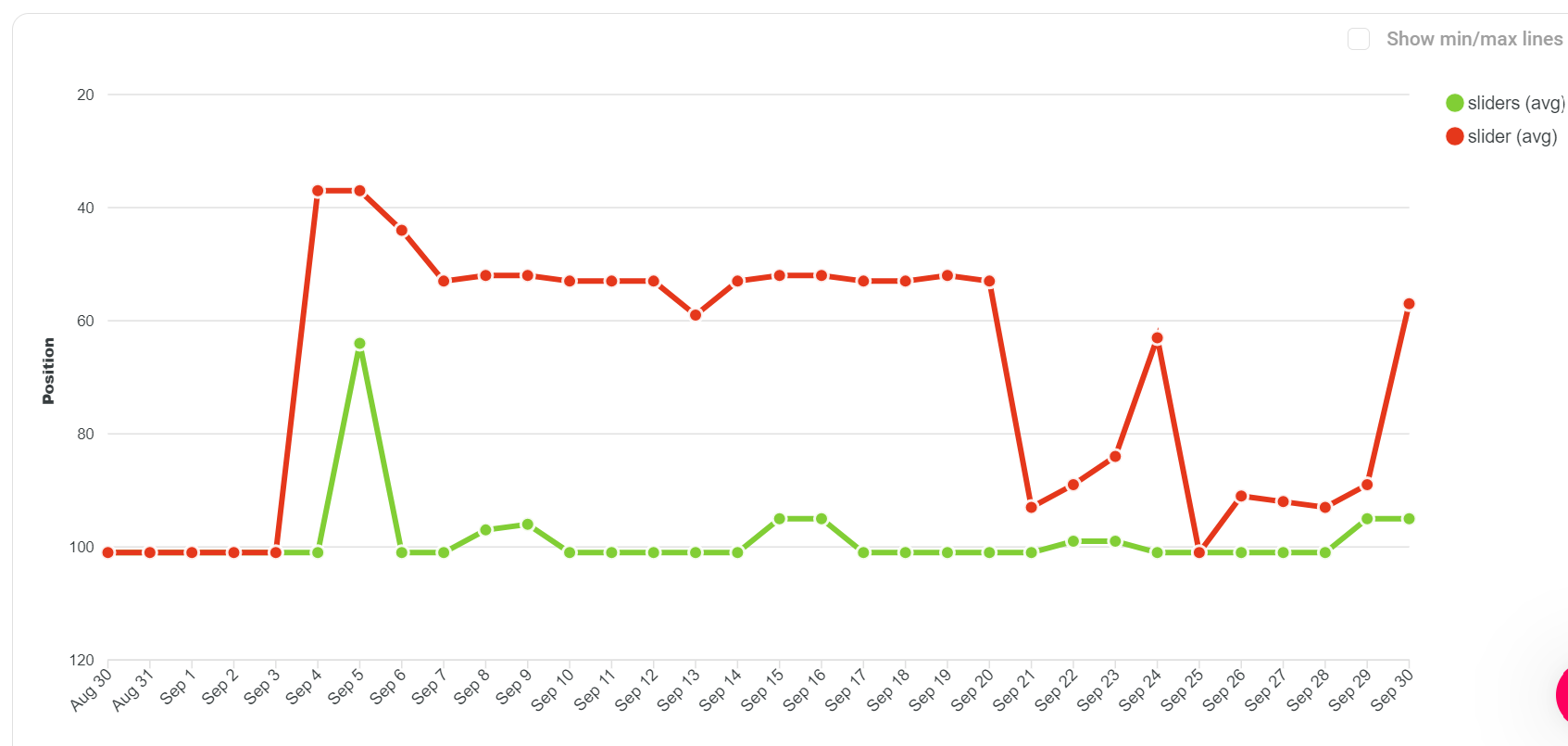 The term “slider” ranked at the time a photo category labeled “slider” was visible, giving it a boost. This difference shows how critical it is for signals on your Google Business Profile to match search query intent—right down to variations of singular versus plural forms.
The term “slider” ranked at the time a photo category labeled “slider” was visible, giving it a boost. This difference shows how critical it is for signals on your Google Business Profile to match search query intent—right down to variations of singular versus plural forms.

6. Keywords in Reviews: Do They Influence Rankings?
Customer reviews can help boost your search visibility, but often times only if the keywords mentioned align with your actual menu or services. For example, a local restaurant had 47 reviews mentioning “Caesar Salad,” but didn’t rank for that keyword because their menu listed it as “Caesar Kitchen.” After updating the menu item name to “Caesar Salad,” the rankings shot up from 71 to #1 within two days. Keywords in reviews might give a short-term boost, however, they don’t hold much weight without corresponding signals on your Google Business Profile—like menu items, photos, or services. Think of reviews as extra layers of relevance—they enhance what’s already there.
Disclaimer: It is important to note that much of my research is done on restaurant categories. Some other categories may not have the option to add a menu, services or products and therefore keywords may hold more weight. I have also noticed that a combination of keywords in reviews, photos and menu items / services are all needed to rank for specific search queries.
Reviews bring a wealth of value beyond just boosting rankings
Google gathers valuable insights from reviews, such as food quality, service, atmosphere, spending, recommended dishes, and specific details like vegetarian options and parking. All this data enriches your profile and helps Google match your business to relevant search queries. Google even uses this information to automatically update attributes on your profile, further optimizing your visibility.
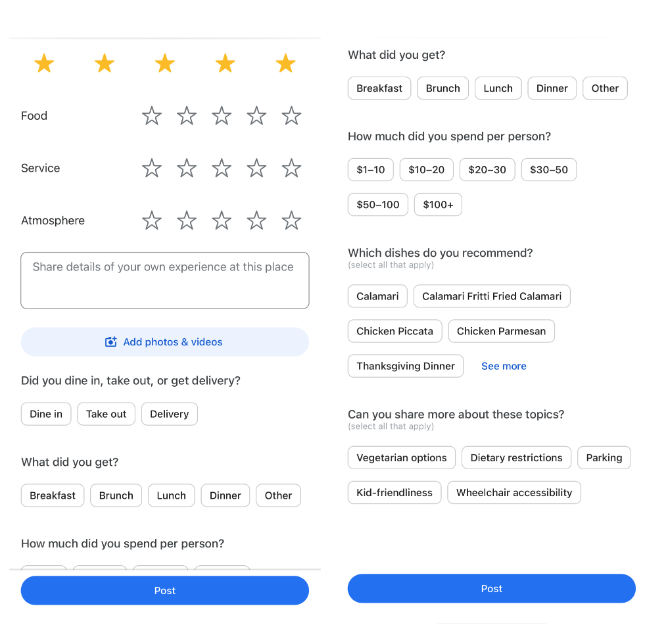

7. Attributes: Your Business’s Key Details
Attributes in your Google Business Profile are more than just optional details—they provide detailed information that can influence rankings and customer decisions. Attributes like “wheelchair accessibility,” “vegetarian options,” “kid-friendly,” and “outdoor seating” can help your business appear in relevant searches. What’s more, Google often updates these attributes automatically, based on customer reviews and feedback, making it easy to keep your profile accurate and aligned with your offerings.

8. Openness: Prioritizing Businesses That Are Ready for Customers
Google has confirmed that a business’s operating hours now play a significant role in local search rankings, particularly for non-navigational queries where users are searching for services or products, not specific business names. Google prioritizes businesses that are open at the time of the search, assuming they are more likely to meet the user’s immediate needs. This means that being open and available when users search can directly impact your ranking.
It’s important to remember that when analyzing ranking reports, the time of day can be a significant factor. Your rankings likely fluctuate not just from day to day, but hour to hour. This means you might see variations depending on when the reports are run. A business that ranks higher during peak hours could see a dip in the middle of the day, so keep this in mind when assessing your local search performance.
9. Click-Through Rate (CTR): Capturing Attention Matters
Your click-through rate (CTR) reflects how many people are engaging with your Google Business Profile after seeing it in search results. The higher the CTR, the more Google recognizes your profile as relevant and appealing to searchers. This can lead to a boost in rankings. Everything from your photos, videos to reviews can influence CTR, so it’s important to keep your profile polished and inviting and most importantly engaging.
10. Proximity: The Power of Location
Proximity has long been known to play a key role in local search — especially for those “near me” queries, but it’s not the only factor Google considers. Just being closer to the searcher won’t guarantee top placement if your profile isn’t optimized. Google is looking for the best fit, not just the nearest option. Your Google Business Profile acts like a portfolio of signals, and proximity is just one of them. Categories, Openness, photos, and CTR all contribute to earning those top spots.
While location matters, relevance can often outweigh proximity. According to Whitespark’s Local Pack/Finder Ranking Factors, proximity to the point of search (Searcher-Business Distance) ranked third. However, with Google’s growing emphasis on openness and real-time availability, it’s reasonable to believe that factors like openness and CTR may now carry more weight than proximity.
11. Popular Times Boost: Riding the Waves of Real-Time Activity
Google’s “Popular Times” feature does more than just display foot traffic—it can impact your rankings. According to a leak from the Google API, periods marked as “Live, Busier than usual” correlate with potential ranking boosts. Google’s systems detect real-time spikes in activity and treat them as signals of relevance, prioritizing visibility in search results. According to the Google API leak, this means high traffic during these “hot” periods can give your rankings a timely boost. For more insights, read the full blog here.
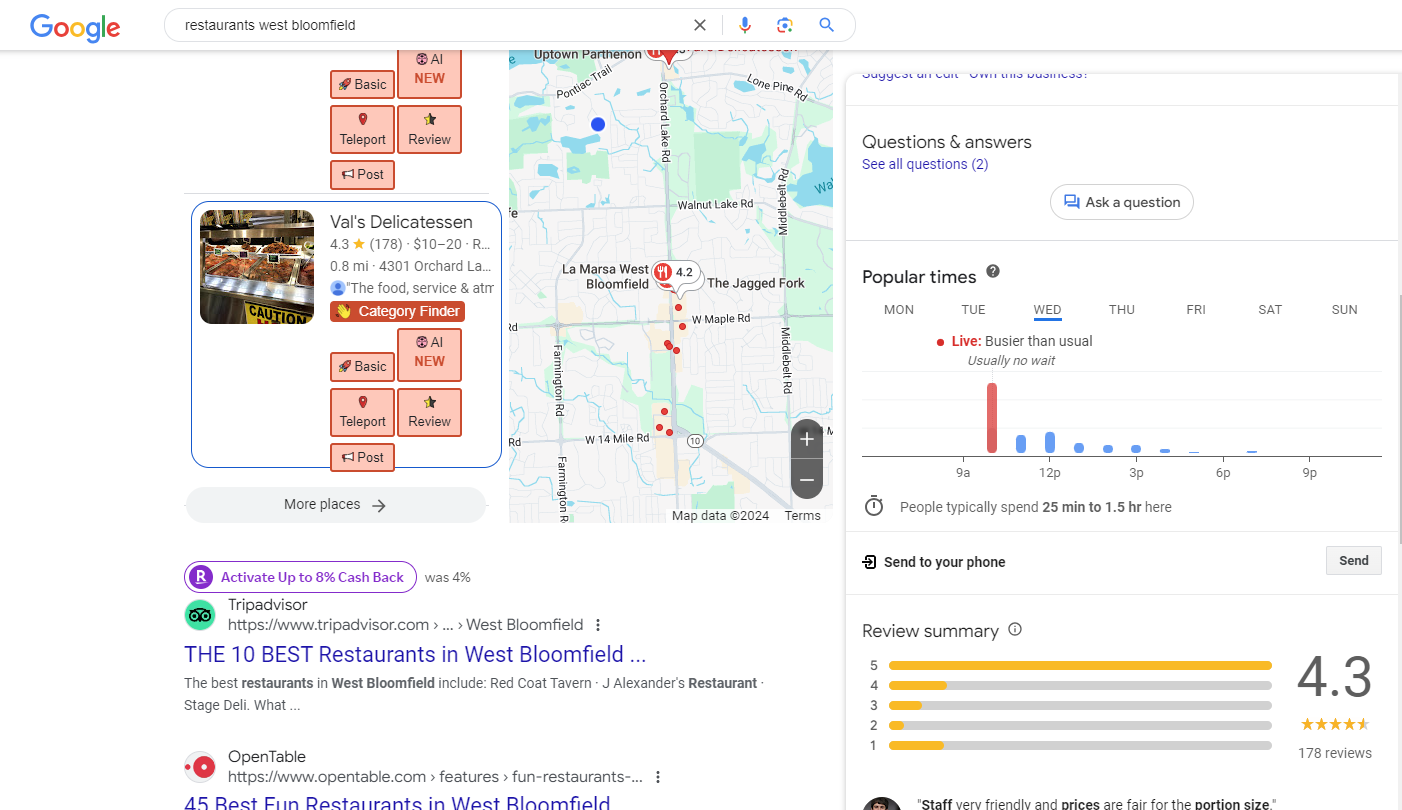
Conclusion: Your Profile Needs Ongoing Care
Managing a Google Business Profile isn’t a one-and-done task—it’s an ongoing process. With every menu update, photo, and attribute adjustment, you’re signaling to Google that your business is active, relevant, and engaged. Staying on top of all the ranking factors ensures that your profile performs well, not just for today but long term. Think of it as a dynamic portfolio that grows with your business, requiring regular attention to stay ahead of the competition. Keep refining, optimizing, and adapting, and you’ll see the results follow.
[…] Claudia Tomina wrote an awesome round up of 11 aspects of ranking for local search – and I want to expand on some of her points in her article. […]